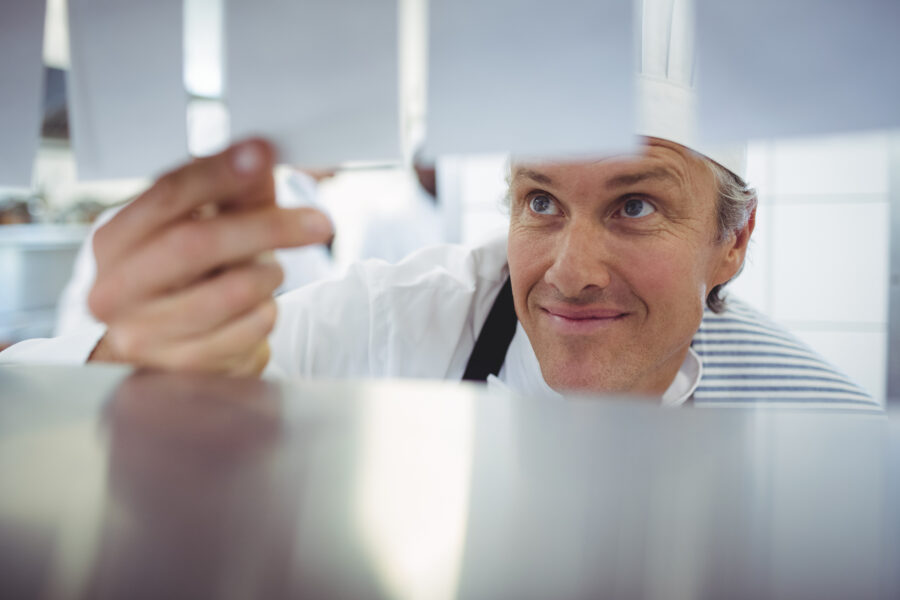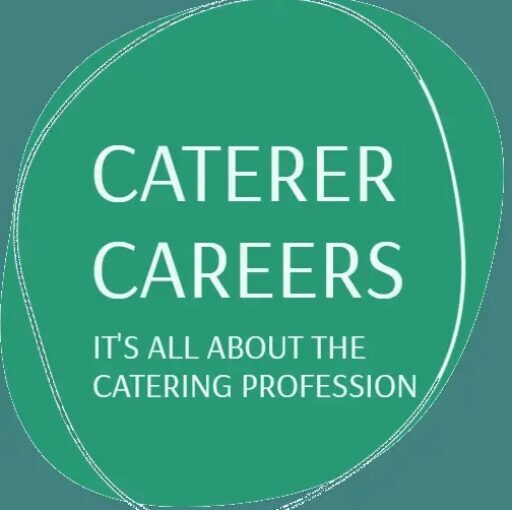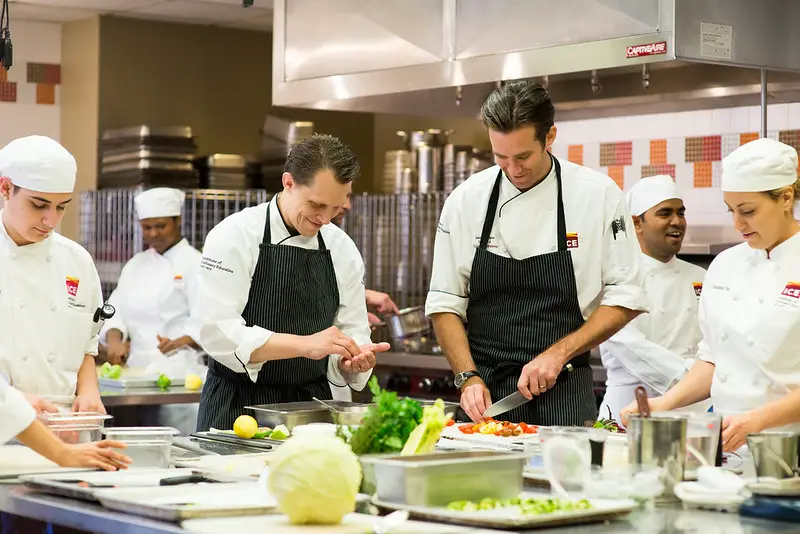
Getting fascinated by occupations can be an experience for someone or some people before they finally settle for a career of their choice. It is like an adolescent who wishes to be in a particular career when he/she grows up.
Career choice can be a challenge for growing young people. They fancy occupations they see in life as a young person; They might not know the challenges or what is involved in certain fields.
No matter how a young person feels about a career, it is deemed fit to get to a stage of adulthood for one to know what career choice to settle for. I think an occupation can be suggested to someone, and then one can decide if it is best for him/her.
For instance, a person who desires to be a pilot must know that the profession will require him/her to be traveling in the skies always. Traveling in the skies has its challenges.
To opt for a stress-less career or research a stress-free career, is not the path to professionalism. The evolution of careers in this generation is not what it was a century ago, and these developments have influenced career choices in this push-button age.
Technologies and emerging technologies have affected career choices in this generation – it has also created several professions.
Young people should be guided to adulthood then they can discover what sort of career they are passionate about. It took me to get to the age of 30 before I finally settled for a culinary occupation.
In this article, we will be looking at 5 sub-points that will guide someone who has an interest in becoming a chef.
They are:
- Passion For Culinary Arts
- Work Planning
- The Knowledge Of Food
- Food Business Management
- Professionalism.
As an insider with over 15 years in the culinary industry, I have seen things, and it behooves me to craft this content from knowledge and experience.
Passion For Culinary Arts (1)
Passion can be defined as a “state where one is comfortable with an activity” regardless of the pressure or challenges within it.
This is the drive and path to any profession that we have decided to settle with In a lifetime. Passion is the reason that we take up, and also stay in that occupation of our choice.
When questions arise: Can I continue on this path? Will I be able to survive in this career? The strong interest you have in the job will erase all negative feelings.
This subsection highlights some situations within culinary work, but passion for the job keeps one to forge ahead.
Below are points about this situation:
Heat/Smoke: Reactions that will emanate from cooking, baking, frying, etc, are “heats and smokes”. These developments are some of the things that characterize kitchen activities. The heat emanates from burners, stoves, etc, Will test your passion.
Aspiring chefs or would-be chefs must know that this is a day-to-day experience to encounter in commercial kitchens
Split-Shifts: Working in a commercial kitchen will involve you doing duties in the daytime, evening, or night, even overnight, depending on the establishment you work in.
Busy Moments: Pressure is one part, or if I will say the most important path of experiences in commercial kitchens. Busy moments are inevitable or unpredictable. Guests or customers can flood the restaurant at any time
Chefs know that their job involves this kind of pressure, and passion for their work makes them stay busy moments. Catering work is public service, a culinarian knows that they are dealing with the public and work so hard to meet customer expectations and satisfaction.
Stay-back: This term refers to situations that chefs sometimes experience at work. If it suddenly becomes busy at the closing hour of a shift crew, (meaning that a chef was to finish his/her duty at that hour or moment), this caterer still stays behind to assist till the pressure goes down, after that, he/she will think of leaving for their home.
So, these are some of the circumstances caterers experience at work, and it takes someone passionate about what he/she is doing to endure.
Ways To Become A Chef
- Kitchen Stewarding
- Chef Apprentice
- Culinary School
The 3 listed above are means chefs that you see today find their path into the culinary industry. There must be a conviction within someone who is a chef that this is a career they have decided to settle for in their lifetime and that they love what they do.
Work Planning (2)
There is a saying that, when “you fail to plan – you plan to fail”. For things to stay orderly in a professional kitchen requires planning. What makes a successful chef is planning.
A chef role job description states that one who is in this capacity will be responsible for the culinary and managerial activities of the kitchen. A sous chef and a head chef are both in this capacity – in other words, an assistant kitchen manager and a kitchen manager function in this role.
A cook role job description does not involve a managerial position. Cooks attend to meal preparation only. If they want to become a chef then they will have to work hard to acquire managerial skills.
A pen, notebook, or diary is required to be in the possession of one in this role. Writing down ideas, tasks, or plans to carry out, is a must thing for this culinarian. Meaning that having a to-do list is how planners achieve their goals.
This is what the planning will be about:
- Mise en place: This is the secret of every successful commercial kitchen. If a kitchen prep task is not done effectively, such a kitchen will always struggle to meet up with service delivery.
- Personal In-And-Out Work Schedule: A chef must maintain a work-life balance, that way one can be active at work, and still sustain a healthy lifestyle. The way you arrange your duties and your time at work must be balanced. Ensure to function in your area of duty so subordinates will learn from you. When out of work, take time to rest properly and avoid unnecessary outings.
- Staff Duty Schedule: As you will be in charge of the recruitment of your associates, you will have to specify their duties to them. Plan how they observe their duty break, and when they go for leave or holiday’
- Routine Checks: On resumption of duty, go around the facility to see if the kitchen equipment is in order. Check that freezers and chillers are functioning at their correct temperatures.
- Requisition: Check your stock regularly so ordering can be done beforehand.
- Kitchen Waste Disposal: Ensure waste bins are in appropriate locations within the kitchen. They should be disposed of any moment they are filled up.
- Usage Of Kitchen Utensils and Equipment: Utensils and equipment should be used for what they are meant for.
The Knowledge Of Food (3)
Commercial kitchens have overtaken the home kitchen in dish creativity. Dish creativity has attracted millions of people to eatery places or restaurants – in other words, millions of people eat out globally every year. People visit restaurants or eatery places to observe culinary arts.
Guests at eatery places admire food creativity and take photographs of them before they eat the food. This trend of dining out is on the rise continually, as a result of culinary arts displayed in restaurants.
Chefs in professional kitchens are responsible for the rise in this trend. A chef must possess vast knowledge of dishes to be competent or stay relevant in the industry.
Dish Creativity
Food commodities are materials chefs work with. How knowledgeable you are with them is what gives you an edge as a chef. It also makes you vast in menu development. Livestock, farm crops, etc, are examples of items to be more knowledgeable about.
Female chef looking at an order list in the commercial kitchen
Being conversant with lots of food commodities becomes a platform or avenue chefs capitalize on to form dishes. The day-to-day handling of different items of food has enabled them to build a long list of dishes.
Putting dishes together to make a menu will depend on how much time you have spent in the kitchen. Chefs who create dishes and menus are those who make the kitchen their second home – I mean that they spend so much time in the kitchen like it is their home. I have observed chefs who even at the end of their duty, are reluctant to go home.
Even while at home these chefs are fine-tuning their creativity. In-depth knowledge and experience in culinary work are behind menus you see presented at restaurants. It is not an a,b,c,d thing. They are thoughtfully worked out.
The 6 Basic Culinary Skills
- Cutting
- Tasting
- Cooking
- Plating
- Seasoning
- Heat Regulation
Cutting Skill: Knife skill is essential in cutting, filleting, etc
Tasting: Taste what you cook
Cooking: Stirring items in pots or pans
Plating Skill: Presentation is the display of culinary arts – food presentation is a stage chefs market their skills.
Seasoning: Add seasonings to your cooking as required
Heat Regulation: The application of heat to food materials is in different forms. Chefs regulate the application of heat to food commodities in other to achieve the desired result.
The Formation of Sauces
Sauces have provided a unique accompaniment to dishes they are derived from. They are part of a variety in a menu. Sauces are made from juice or liquid of meats, seafood, vegetables, etc.
Stock: Stocks are derived from the bones of chicken, beef, etc. They are used in sauces, stews, soups, etc.
Roux: A thickening agent made from the combination of flour and butter.
The 5 Mother Sauces
What makes you a chef when you do not know the 5 mother sauces? Although other sauces are developed today, as a chef, you must be knowledgeable about these fundamental sauces:
Tomato Sauce: freshly blended tomato cooked to reduction, and flavored.
Veloute: A formation of chicken, fish, turkey, vegetable stock, and roux.
Espagnole: A formation of beef, lamb, veal, duck stock, and roux
Hollandaise: egg yolk and melted butter are combined, and whisked to form the required consistency.
Bechamel: A formation of roux and liquid milk.
Food Development Factors
2 Types of food preparation platforms:
- Commercial Kitchen
- Non-Commercial Kitchen
2 major policies in Food Production:
- Food Safety
- Kitchen Hygiene
2 Types Of Food Commodity
- Dry Food Material
- Fresh Food Material
2 Types Of Food Temperature
- Hot food
- Cold food
Factors that lead to the development of dishes and menus
Savory food: a dish that is seasoned during preparation.
Non-savory Food: a meal that is without seasoning.
Colors: The appearance of food has an appeal to the eater.
Diet: meal balance for nutrition value. Vegetarian diet – non vegetarian diet
Ethnic cooking: Endeavor to learn the cooking of other regions of the world.
Food trends: Embrace food trends as culinary arts are wide.
Attention to detail: It is always important to note customer or guest preferences whenever food is prepared. The chef must educate the waiting staff to communicate with guests during order taking if they have any food allergies
Note
The knowledge of dishes can take a long time to develop. Every moment spent in the kitchen is an avenue to grow your food knowledge.
Understanding food commodities and their application in cooking remains the best practice. Forming a dish will depend on how knowledgeable you are about food commodities
Food Business Management (4)
A Company, an establishment, a business, etc., operates to make a profit. Food companies are set up, and the establishments thrive to stay in business. In the process of their activities. They expand.
A food company can be set up in a state or region, and that same company can grow and expand nationwide. The same company can expand beyond the nation by going global. Now look at these: if the company is not making a profit, how will it expand let alone go global?
A food establishment operates to make a profit, and as the company makes a profit the outcome becomes expansion. This managerial skill is what differentiates a chef from a cook.
There are 3 aspects when it comes to food business management:
- Weights And Metrics: The ability to do quantifications and calculations.
- Food Costing/Control: The ability to make charges for dishes or menus created.
- Profit And Loss: The ability to generate profit and minimize loss.
A chef manages the kitchen together with culinary tasks while a cook stations on meal preparation. Food commodities or materials provided for kitchen work must be maximized for profit. Capital invested in a business is expected to yield positive results.
There is a cost to running a business which involves bills. The only thing that can cover this cost is profit. It is from profit made that bills are settled and salaries paid… The chef manages the kitchen to generate revenue, and profit for the establishment
The kitchen manager must be conversant with weights and metrics. The chef manager must know economics, use food materials well, and minimize wastage.
Restaurant brands that are popular throughout the country are evidence of a successful business. What translates into their popularity is profit. If the restaurant does not make a profit, it will not be everywhere.
Chefs in the kitchen generate this revenue and profit for the establishment. So, as a chef, you should be mindful that revenue and profit generation is a task to be performed aside from
Professionalism (5)
It is not just enough to decide to be in a career. Time will test if you can remain in the profession. While in an occupation, challenges will try your dedication towards the career. Industry professionals experience trying times within the field, but there is a resolve to stay true to the profession.
In this fifth sub-point, I will list some things a professional chef should do or things a chef should be:
A Team Person: Running a professional kitchen is not a one-man job. The chef relies on team members to achieve set goals.
This culinarian can never undermine the value of teamwork. Team members must be given whatsoever assistance needed by the chef to grow and mature on the job.
The chef must oversee team members in these areas:
- Keep an eye on cooks regarding meal preparations they carry out.
- See that they possess proper knife skills.
- Observe that they wear proper PPE or uniform.
- Ensure that they understand the importance of grooming at all times.
- Complementing team members for a job well done can go a long way to motivate them.
- Make sure team members understand refrigeration temperature levels.
- Encourage kitchen stewards to take up culinary apprenticeship programs.
Feedback: Complaints or compliments are two kinds of responses to get from a customer. Chefs are always open to receiving feedback for services rendered to guests to know if they are living up to expectations or not, This will enable them to improve on areas they need to improve on for better quality services to customers.
Public Servant: Culinary work is to serve the public. Satisfaction can go a long way to bring healing to people – people get attracted to places they can find some sort of satisfaction. People come together in places of this sort and a chef should be mindful of these.
Temperament: Busy moments in the kitchen can raise tensions. The culinary manager must coordinate activities in the kitchen in a proper temperament. Temperament is one thing that replicates the true character of a chef. This caterer must maintain a decent temperament for subordinates to emulate.
Staff Welfare: A chef should be concerned about staff wellbeing, relating with workers to know if there is a way they can be of assistance. The care for workers is necessary to carry them along.
Mind-Set Of A Chef: Chefs are always mindful of giving their best. If they are out of work premises, they are thinking if team members are carrying out their tasks by serving the public well.
Training Of Culinary Interns: Always see this as a duty to impart knowledge whenever you can. Culinary interns posted to catering establishments should be seen as an avenue to extend the impartation of knowledge.
Culinary Events: Fairs, expos, etc, These are examples of culinary events you can make time to attend whenever you can.
Online Profile: The advancement of technology in the present day has made it possible for chefs to connect and interact online. Professional networks like LinkedIn are a platform for industry professionals to relate and connect and also share industry-based interests.
Culinary Associations: If you like, you can join culinary associations in your state or region as it is another avenue to relate with industry professionals.
Conclusion
As a cook, commie, or entry-level caterer, the only way to move up the ranks, is to stay committed. You walk your way up from the bottom. There is a point of knowledge which leads to the point of experienced skill.
The level of a cook and a chef is not the same. Why their experiences are not the same is due to their level of commitment to the knowledge of cuisine. How committed you are will determine how you move up the ranks.
There are positions in the kitchen that require you to stay or work in a station or section of the kitchen. You could be cooking sauces, prepping vegetables, etc, but not involved in managerial activities.
Depending on ability, some cooks choose to remain at the commis level. If you will attain the position of a kitchen manager, it will require knowledge of cuisines and education.
Kitchen work can be very demanding, individuals should be left to decide if it is a career they choose to be in during their lifetime. Standing almost all the time in the kitchen doing activities can attest to this.
The influx of guests sometimes into the restaurant puts pressure on the kitchen. The kitchen is characterized by fast-paced movements. Some people may not want to be involved in occupations with these characteristics.





